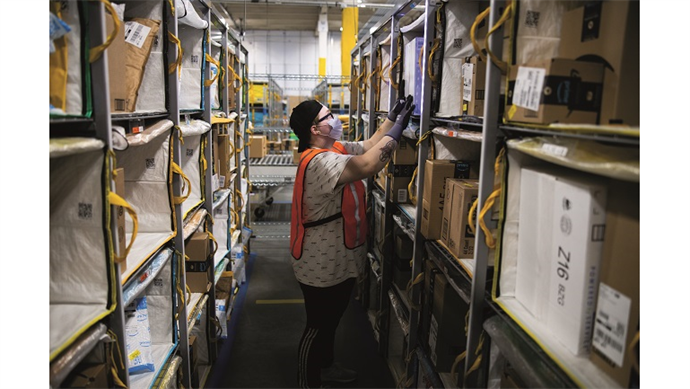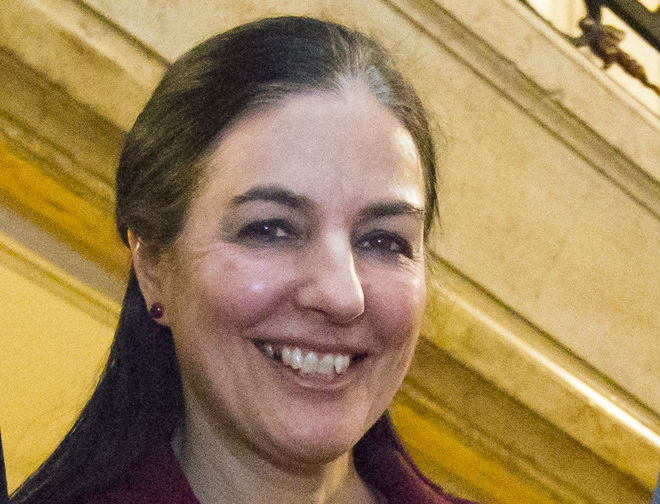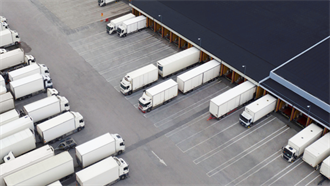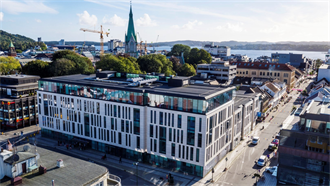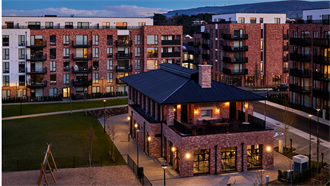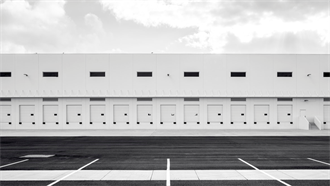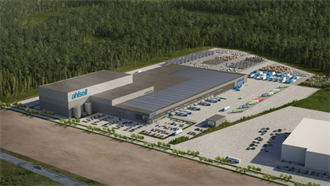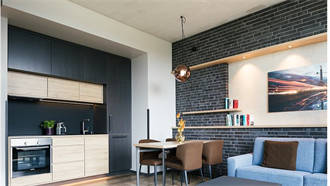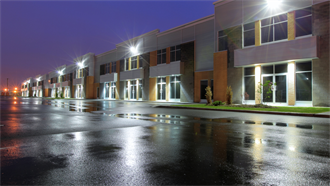The online retail giant is making a big push to launch its ground-breaking delivery stations – new generation sites for the all-important last-mile stage of the logistics journey.
If you’re one of the 200 million paid-up members of Amazon Prime you’ll know that among the benefits of the subscription is the unlimited, guaranteed next-day delivery of your shopping, covering the eligible majority of items that Amazon sells.
Prime membership growth has been phenomenal. The world’s largest e-commerce company said that it reached 100 million members in April 2018; 150 million by the end of Q4 2019; and 200 million in April 2021, meaning it added another 50 million during the pandemic. It is one reason why the e-commerce giant is now so focused on last mile delivery. It is a priority for Amazon to bring its facilities closer to the communities it serves and especially areas with a high density of Prime members.
Amazon calls the buildings which prepare customer orders for the last stage of fulfilment, delivery stations. ‘They have got a lot of these coming. They have some existing and more are coming,’ says one broker who knows more than most about Amazon’s continuously evolving logistics strategies. In this broker’s view: ‘They are the most interesting buildings to come on the scene in my years of working in this field.’
The building shells are a mere rectangular box, typically 7,000 m² upwards, with the clever stuff on the inside. ‘They house a fairly simple piece of engineering to sort parcels which is a conveyor belt with a lot of bar code scans on it,’ this agent says. ‘But the magic is how the parcels are put on and taken off that belt in the most efficient fashion in terms of inventory in and out.’
Dozens of sites
Amazon’s UK press office says a new delivery station opening in the summer in Harlow, to the north east of London, will be typical of the European roll-out. Like all the delivery stations, it is operated by Amazon Logistics (AMZL), Amazon’s own logistics network which in the UK is headed by Kerry-Anne Lawlor.
‘Packages are shipped from neighbouring Amazon fulfilment and sortation centres and delivered to customers’ doors by Amazon Logistics’ delivery service partners and Amazon Flex delivery partners’, says a press release.
Amazon established AMZL to reduce its reliance on third parties to get its goods to customers, and to hedge against potential price increases for delivery services by companies such as UPS and FedEx. According to a recent research note by RBC Capital Markets published last autumn, the US giant could see 50% lower per-unit shipping costs versus retail competitors if the growth in delivery stations continues, saving billions of dollars in last mile delivery costs.
The Harlow building, at Icon on River Way, is at the smaller end of the delivery station range at 7,000 m² and will need only around 100 van drivers. Amazon says that it will serve customers on the doorstep in the local Harlow area. By comparison, an 8,000 m² delivery centre which Goodman is developing for Amazon to the east of Milan can reach 2.5 million homes in 30 minutes. Construction on Pioltello Logistics Centre began in February and is due for completion in September 2021.
Robert Viegers, vice-president of AMZL Germany, Austria and the Netherlands, confirms in a press release that the Amazon facility under construction at Rozenburg- Schiphol in the Netherlands will be for an 8,500 m2 delivery station which will require 450 van drivers.
‘Amazon will start working with small and medium-sized independent local delivery companies in the Netherlands in addition to its existing carrier partners’, the release says. Packages will be shipped to the site from German or French fulfillment and sortation centres and loaded for delivery to customers in the Greater Amsterdam area.
Retail park conversion
A recent UK planning application gives further insight into how AMZL plans to operate its delivery centres. The application made last December, and known to be for Amazon, proposes developing a delivery station on a former retail park in north London at Mill Hill.
The 9-acre Pentavia Retail Park site is tight and the application says the operation will involve 449 delivery vans. Most of the vans will leave the site between the hours of 06.30 and 10.00, returning to the site between 16.30 and 19.00. The site plan includes: parking for 132 full-time staff plus visitors; a service yard for up to eight articulated lorries at any one time; and a multi-storey delivery van park.
However, it is expected that many delivery van drivers will access the site on foot or by bicycle, or by car and park in the vicinity, suggesting that Amazon Flex drivers will be collecting and returning their vans from and to the site. This is another Amazon last mile innovation. A second agent says that Amazon’s new requirement to the real estate industry is that delivery centres must normally have hundreds of van parking spaces, as part of the group’s last mile electrification programme.
He says in the not-too-distant future, Amazon will routinely provide Amazon Flex drivers with electric vans: ‘Previously, if you were an Amazon courier you would have your own van and you’d charge it back to Amazon for the work you do’, he explains. ‘Now, Amazon will own the vehicles and lease them to couriers. And they have to store them somewhere and charge them up.’
Electric vehicles
At Pioltello in Milan Goodman says: ‘The property will include future-proof features such as 256 e-charging stations for cars, trucks and vans to facilitate and encourage green deliveries.’ The area’s town councillor and deputy mayor of Pioltello Saimon Gaiotto adds: ‘We are pleased that this building will be fully set for the deployment of electrical fleet in the coming years.’
Amazon has ordered 1,800 electric vehicles in Europe so far, from Mercedes-Benz vans. Some 500 came to the UK and a pilot is underway at the giant’s Bristol delivery station. The main order, however, is for 100,000 new electric delivery vehicles from US-based car manufacturer Rivian.
According to the Financial Times, Rivian is a start-up in which Amazon has an undisclosed stake. Last year Amazon made an investment in the company as part of the e-commerce juggernaut’s $2 bn climate pledge. All the electric vehicles are supposed to be on the road by 2030 and the first incorporated into the network and delivering packages in 2022.
Amazon has not said how many global delivery centres it expects to need in the next few years and did not comment on a report in Bloomberg last September that suggested it was planning 1,000 in US cities and suburbs alone. But the company did comment that it has ‘dozens’ right now in Europe, where it is prepared to pay a lot for sites.
The price at Mill Hill was circa £65 mln (€76 mln), or over £7 mln an acre. The vendor, a residential developer owned by private equity firm Meadows Partners, bought the park in September 2013 for £27.8 mln.

